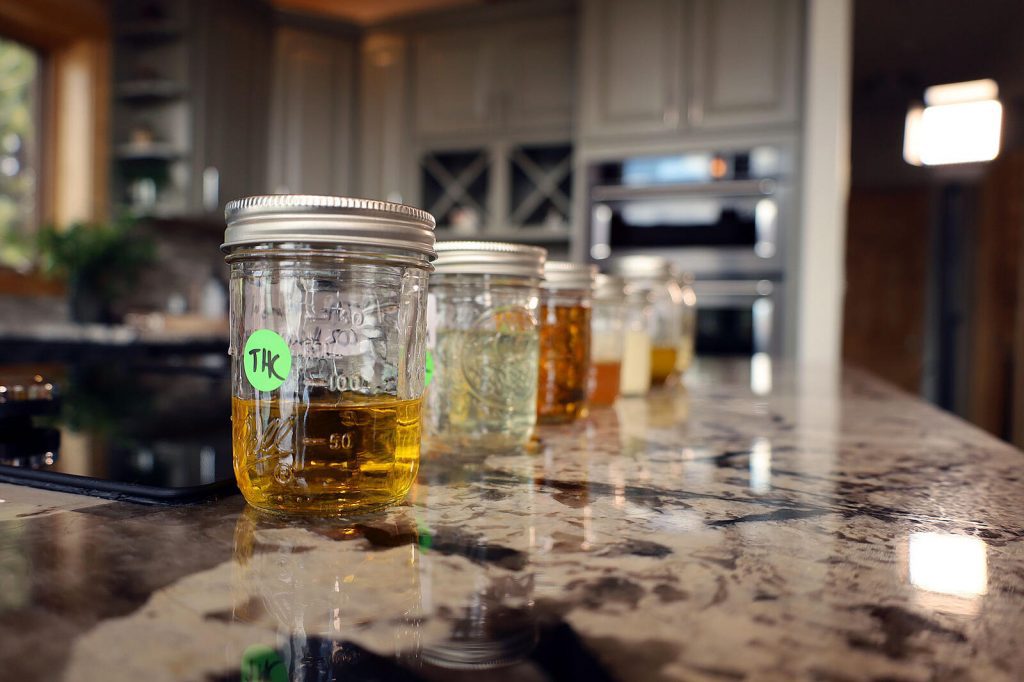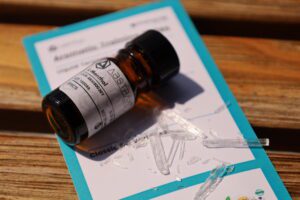Chances are, if you’ve eaten a couple of dozen different edibles, you’ve had at least one or two that flat out tasted like you were chewing on cannabis. Although some of you reading this do enjoy the flavor of weed, most people don’t. So, how do you pair the taste of cannabis into a recipe without making the majority of those who try it feel like they just took a shot of Wheedgrass? Let’s break it down.
Whenever you’re making a cannabis infusion, you need to consider three things before getting started.
- What will the decarbed cannabis product taste and smell like?
- Do you want the infusion to taste like cannabis?
- Is that flavor going to pair with the final dish?
What will the decarbed cannabis product taste and smell like?
The majority of cannabinoids have to be heated to be effective. The heating process is called decarboxylation. In short, the heat evaporates off molecular structures attached to the cannabinoids and allows them to fit better onto your cannabinoid receptors. Think of it as – before a cannabinoid is decarbed, it’s like trying to put the wrong key into a keyhole, but once it’s heated, open sesame.
While decarbing your reefer, many other things are happening to the hundreds of different compounds found within the plant. Terpenes are one of the first compounds affected during decarb by evaporating or changing their structure due to heat. Decarb completely changes the product’s aroma and flavor profile. Depending on the temperature, the beautiful characteristics of flower or wax can quickly become bitter-tasting and have somewhat of an offputting nutty aroma.
These profile changes are why you can’t base the flavor and aroma of an infusion on the raw product used to create it. Everything changes with decarb! So, whenever you’re making an infusion, evaluate the aroma and flavor of the decarbed product, consider the characteristics of the infusion base it’s going into, and then think about the recipe that it will accompany.

Do you want the infusion to taste like cannabis?
You should always mentally taste, smell, and visualize your final dish whenever you cook something new. Mindfully think about all the ingredients you’re cooking with, how you’re preparing them, how they will mix from an aroma and flavor perspective, and what elements are meant to shine. Consider bold ingredients like garlic, hot peppers, ginger, raw onion, cumin, etc.; will any of these flavors dominate the dish and linger on your palate for hours, or will they be balanced and harmonious?
When you’re cooking with cannabis flower or concentrates, there are ways you can make an infusion taste super herby and other scenarios where you can’t detect cannabis whatsoever. If you’re looking to impart the flavor of cannabis into an infusion, I would recommend making a flower-based infusion or cooking with a mix of raw and decarbed concentrates.
Flower will always add extra earthy and herbaceous notes into an infusion, especially if you make it with a mild-tasting base like butter, clarified butter, MCT, avocado oil, etc. However, most concentrate infusions (aside from RSO or similar products) will impart minimal to no aroma or flavor unless you make them super potent.
What’s important to note here is that the dose of your infusion will ultimately determine the pungency of cannabis. If you make a flower base infusion and end up with 25 mg/ml of THC, the flavor of cannabis will be significantly more potent than making an infusion with 1 mg/ml. This scenario can apply to concentrates, but for the most part, if you’re looking for a concentrate infusion to smell and taste like cannabis, then you want to add a raw hemp concentrate into the mix. Don’t waste your money adding a marijuana product that isn’t decarbed. Instead, get some hemp wax that’ll be cheaper and easy to get online, which will smell just like marijuana. What’s the point of paying for THCA if it’s not activated?

Is that flavor going to pair with the final dish?
Once you have an aromatic infusion, think of it as any other kind of infused oil. If the flavor and aroma pair with the other ingredients you’re cooking with, then have at it. Bet keep in mind that not all cannabis will smell good with food.
The other day I was driving out of my community, and I said to my wife, “someone is blazing up.” I then took a turn to get onto our main road, and I saw a dead skunk that got struck by a car. I laughed out loud and shook my head. It’s so weird that my brain is programmed to think positively about off-putting odors since many cannabis varieties smell of skunk, poop, wet basement, grandma’s closet, and other weird things.
We know decarb will minimize or negate a lot of the aroma from cannabis products, but some of these weird odors can still linger in an infusion of made potent enough. This is why I recommend working with citrus, herbaceous, fruity, or floral aroma profiles when selecting cannabis products to pair with recipes. I realize that may sound somewhat generic, but that’s the point. A chef can pair those aroma characteristics with any course, whether an appetizer, a main course, dessert, or cocktail.
Isolated terpenes and strain-specific blends can be added to infusions or recipes, completely transforming a dish. Limonene, linalool, beta-caryophyllene, ocimene, and a few others are some of my favorites. I steer clear of pinene, menthol, terpinolene, and other tree-like aromas because they have a “cleaning aisle” profile. Although there is plenty of pinene or menthol in fresh herbs like rosemary and thyme, when isolated, these terpenes smell like chemicals, not food!

Another thing to consider is that many guests at an infused event have never tasted cannabis in their food before. Unfamiliar flavors can be life-changing or alarming. Overall, most people at an infused dining experience want to have great tasting food that makes them feel incredible – they don’t want mediocre or weird food that just gets them high. Always remember that the food should always be better than the high!
I know there are plenty of smot pokers that love the taste of weed, and for those of you that do, fantastic, eat up! But keep in mind that a chef who loves super spicy food shouldn’t assume that all their guests can handle a 2,000,000 on the Scoville Scale! Sometimes, chefs must separate what they love from what guests want, or balance what excites them about food and what the general population enjoys.
So, whether you make super pungent and robust infusions that smell and taste like a living plant or never have anything that resembles cannabis in your food, make sure it tastes good and your guests are appropriately dosed!
In the Cooking with Cannabis online course, a 2:2:1 infusion is featured with hemp and marijuana products.
- 2 grams decarbed hemp wax
- 2 grams raw hemp wax
- 1 gram decarbed marijuana wax
- Avocado Oil
The final dose came to 7 mg of CBD and CBDA and 4 mg of THC per milliliter. The infusion was blended with cannabis leaves for an herbaceous and slightly bitter herb oil and paired with an Italian butternut squash soup.

Check out the clip below for a sneak peek of the Cooking with Cannabis course, which is now available!



